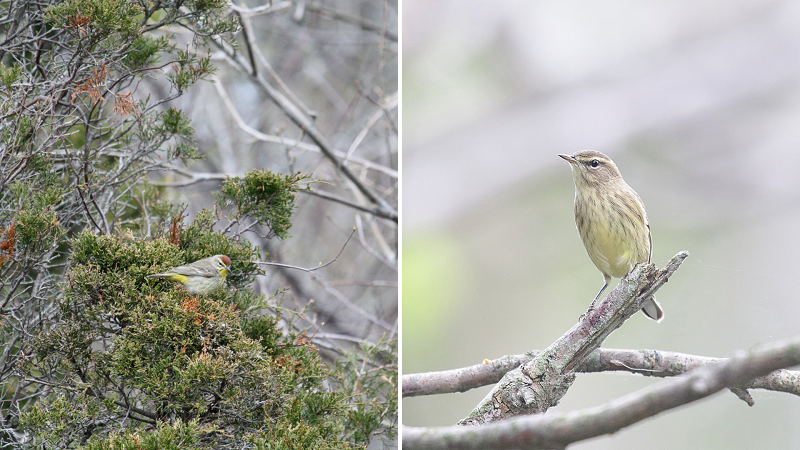Today’s post comes from Laura Penner, a Discovery Program Group Leader at Rondeau Provincial Park.
Thousands of birdwatchers flock to Rondeau each spring to take part in one of natures most spectacular events, the annual songbird migration.
The male warblers, in their attempt to attract mates, are in their finest plumage with bold patterns and bright colours. Their unique songs fill the air! Beginner birders focus on the bird’s appearance to identify it. For more advanced birders, the songs may help identify birds that aren’t out in the open putting on a show.
But for those who are ready to take their warbler identification skills to the next level, there is the fall migration!
After a summer season on their breeding grounds, most warblers and songbirds head back south to their overwintering grounds, bringing them back through southern Ontario and places like Rondeau Provincial Park.
There are a few new challenges that come with bird-watching during the fall migration:
1. The distraction of beautiful fall foliage
When the birds first pass through in the spring, they do so just as the leaves are opening on the trees, giving birders unobstructed views.

Now, the forest is filled with the oranges, reds and yellows of autumn, making it a bit more difficult to get a good view.
2. Everything you thought you knew about warblers has changed!
With the mating season behind them, warblers no longer require the flashy colours. They become drabber versions of their spring selves.
Take a look at these two Yellow-rumped Warbler shots. The left photo was taken in the spring, while the right photo was taken during the fall.

Photo (right): Allen Woodliffe
Or how about the seasonal difference between these two Palm Warblers?

Photo (right): Allen Woodliffe
Throw immature birds into the mix, and you’ll find yourself using the “Confusing Fall Warbler” section of your favourite field guide much more often!
3. No more mating songs
Not only do the birds become drab, they no longer need to sing to communicate to potential mates. You’ll have to rely on field markings alone to identify these birds!
But don’t let this dampen your spirits!
Fall is a beautiful time to be out in any park! The weather is pleasant, the summer crowds have dispersed, the mosquitos are taking a break, and the trees are beautiful!
 Bring along a friend – more eyes are always better when it comes to birding.
Bring along a friend – more eyes are always better when it comes to birding.
Take a slow walk along your favourite trail, keeping an eye out for movement in the canopy.
Focus your binoculars on the bird and look for any familiar markings (in most species these field marks are lighter in colour, but still present).
Follow your first hunch. Although the birds are muted, it might be that yellowish patch on the head and white wing-bars that made you think of a Chestnut-sided Warbler, even though his chestnut side was missing.
Make notes of what you do notice about the bird so you can look it up afterwards. Using apps like eBird and iNaturalist can help you know what other people are seeing in the area and might help you narrow down your options!
But most of all, be patient and persevere! With all things, you improve with practice and experience – and there is no better place to practice your new hobby than out in nature on a tranquil trail!
